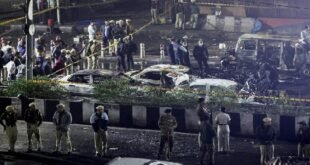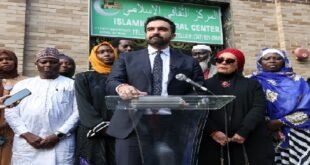29-09-2025
KATHMANDU/ NEW DELHI: At least 33 of the demonstrators killed during anti-corruption protests in Nepal this month were struck by “live bullets” fired from “high-velocity firearms,” the medical institute that conducted the postmortem examinations told Reuters.
 The findings were described to media by a member of the forensic medicine department of the Tribhuvan University Institute of Medicine, who spoke on condition of anonymity to discuss sensitive matters. An institute spokesperson subsequently verified the account, marking the first official confirmation that live ammunition was used during the unrest, in which 74 people were killed and over two thousand injured.
The findings were described to media by a member of the forensic medicine department of the Tribhuvan University Institute of Medicine, who spoke on condition of anonymity to discuss sensitive matters. An institute spokesperson subsequently verified the account, marking the first official confirmation that live ammunition was used during the unrest, in which 74 people were killed and over two thousand injured.
Unverified images of non-rubber ammunition and protesters with head and chest wounds had circulated on social media in the aftermath of the Gen-Z-led demonstrations against a system in which the politically connected would flaunt luxury goods and holidays on social media.
The protests ultimately led to the resignation of the septuagenarian Prime Minister K.P. Sharma Oli and his government.
A key protest leader had previously demanded the arrests of Oli and his home minister, Ramesh Lekhak, for allegedly giving orders to use live ammunition on the demonstrators. He did not provide evidence.
Oli had said in a Sept. 20 Facebook post that his government had not ordered security forces to fire at protesters. Aides for the former prime minister and Lekhak who said he accepted “moral responsibility” for the violence when he resigned on Sept. 8 did not return phone calls.
Muktiram Rijal, a spokesperson for Kathmandu District Office which administratively supports law enforcement but does not have command over the police, told media on Thursday that he had no knowledge about the use of live ammunition. He had previously told Reuters that the police were permitted to use rubber bullets, water cannons and batons for crowd control.
 A spokesperson for Nepal Police, which was in charge of managing the protests when the violence peaked on Sept. 8 and 9, said that it was not able to comment until an investigation by a committee convened by the newly appointed interim government had concluded.
A spokesperson for Nepal Police, which was in charge of managing the protests when the violence peaked on Sept. 8 and 9, said that it was not able to comment until an investigation by a committee convened by the newly appointed interim government had concluded.
The autopsies were conducted at the institute’s Kathmandu-based Maharajgunj Medical Campus, which received 47 bodies from hospitals across the capital after the protests.
The member of the forensic medicine department said that of the 34 bodies with bullet wounds that had been examined, ten had been struck in the head, 18 in the chest, four in the stomach and two in the neck. Only one person had been hit by a rubber bullet. The department could not determine the caliber of the bullets or the specific type of firearm used to fire the fatal ammunition. “In all cases the bullets were distorted and fragmented,” the person said.
High-velocity weapons can typically fire projectiles at over 600 meters per second. Law enforcement in Nepal has access to such arms, though they don’t usually use them for crowd control, said Subash Acharya, a former legal consultant to the police.
Nepali citizens normally have to prove that their life is under threat to get a gun license, so it is difficult to legally obtain a firearm, said Acharya.
Oli had suggested in his Sept. 20 post that infiltrators had been involved in the protests and urged an investigation “into the incidents in which shots were fired from automatic weapons that are not in police possession.”
He did not state how he knew that shots were fired from automatic weapons. (Int’l News Desk)
 Pressmediaofindia
Pressmediaofindia




